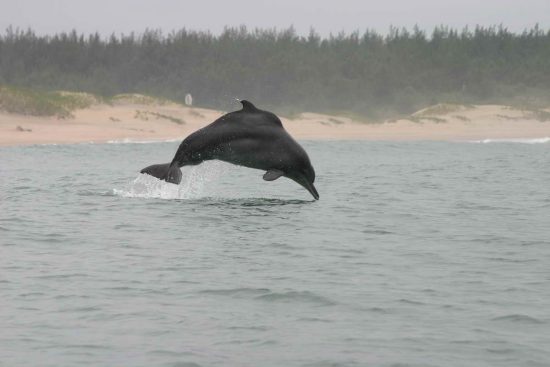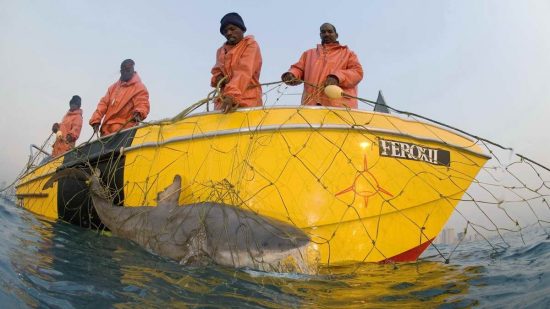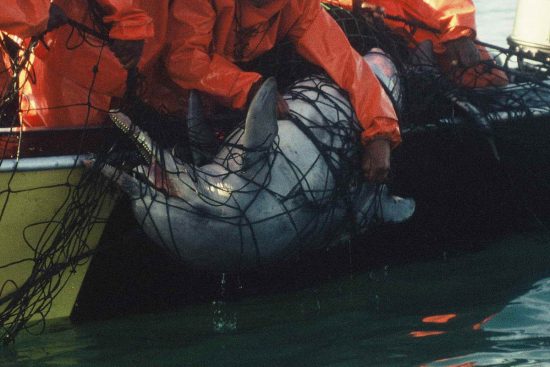




First shark nets dismantled
After the fourth incident earlier in 2017 involving an endangered humpback dolphin (Sousa plumbea) in a shark net off Richards Bay, South Africa, one of the deadly nets (particularly for dolphins) has been dismantled, while the length of another net has been halved.
The Society for Dolphin Conservation (Gesellschaft zur Rettung der Delphine e.V., or GRD) has been supporting South African marine biologist Shanan Atkins from Witwatersrand University in Johannesburg and her "Humpback Dolphin Research" project. The aim of the project is the dismantling of all shark nets in South Africa and the establishment of effective, non-lethal beach protection measures.
Atkins had come up with the plans for the dismantling of the shark nets, which is now being implemented and enforced after tough negotiations.
Richards Bay – a death trap for dolphins
Local humpback dolphins are the most endangered marine mammals in South Africa. On the eastern coast (KwaZulu-Natal), there are about 200 individuals. Along the southern coast, there is another population which, according to the latest scientific knowledge, comprises about 500 specimens. Humpback dolphins live extremely close to the coast. Atkins’ research revealed that six shark nets were responsible for 60 percent of all the dolphin deaths in Richards Bay in KwaZulu-Natal, as we had reported.
Shark nets kill marine animals indiscriminately
Although shark nets are supposed to protect swimmers and surfers from shark attacks, they also kill sharks, dolphins, sea turtles, rays and larger fish as well. The installation of shark nets is not required by law in South Africa and is highly controversial. Currently, 37 beaches in KwaZulu-Natal have been fitted with the nets, with their anchors just below the water surface. The total length of the nets is 23.4 kilometres. “Many other bathing beaches, on the other hand, are unprotected, and do not see any increase in the number of people being exposed to the threat," said biologist Ulrich Karlowski (GRD).
In a space of just 30 years, 33,000 sharks, over 2,200 turtles, almost 8,500 rays and 2,500 dolphins have died in the shark nets of KwaZulu-Natal. In addition to the endangered humpback dolphins, Indo-Pacific bottlenose dolphins (Tursiops aduncus) and long-nosed dolphins (Delphinus capensis) are affected as well.
The reduction in the size of the two nets in Richards Bay will help lower the risk for many marine animals, especially dolphins. Unfortunately, a reduction in shark by-catch is not expected. To compensate for the reduced net area, "drumlines" (lines attached to buoys, with a heavy bait hook at the end used to catch large sharks) will be installed. “A first important step has been taken. Our goal is that neither dolphins, sharks or other marine mammals have to pay for the protection of beaches in South Africa,” said Karlowski.
For further information: www.wwf.de
 Herbert
Herbert 27th September 2017
27th September 2017 Richards Bay, KwaZulu-Natal, Südafrika
Richards Bay, KwaZulu-Natal, Südafrika